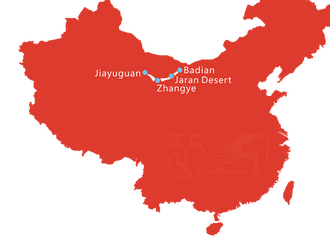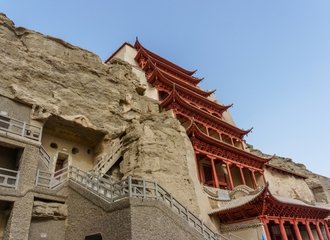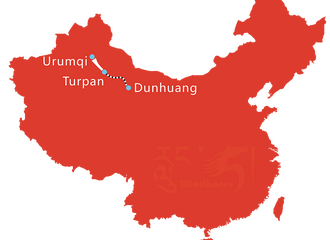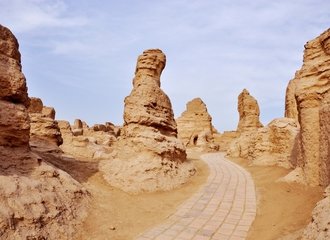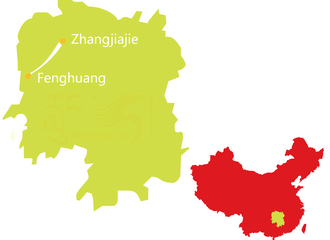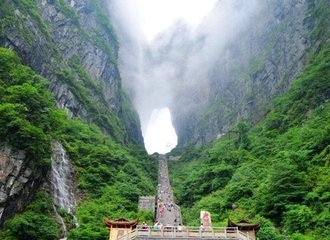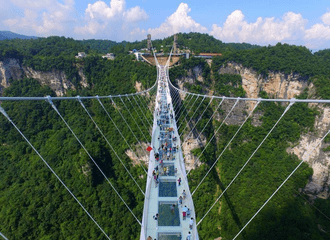Tibetan Knife
The knife is a traditional accessory of the Tibetan people. It is often worn at the waist, used for self-defence, hunting, cutting and also just for decoration. Tourists are attracted by its unique and exquisite design and often take it as a souvenir or as a gift to friends.
Types & Uses of Tibetan Knives
There are various sizes of Tibetan knives. The larger ones can be over 1 meter (3.3 ft.) long while smaller ones may be only 10 cm long (0.3 ft.). To make a knife requires skillful work. The knives for men and women differ. Men's knives usually seem wild while women's are elegant.
Utility Knives
Tibetan utility knives are practical tools used in daily life, especially in rural areas and nomadic communities. These knives are essential for:
- Cutting meat – Tibetans consume a lot of dried and fresh yak meat, which requires a sharp, durable knife.
- Food preparation – Slicing cheese, cutting vegetables, and other cooking tasks.
- General chores – Used for crafting, cutting ropes, or even self-defense in remote regions.
These knives typically have a sturdy blade and a simple handle, often made from wood or bone. Usually these types of Tibetan knives don’t have decorations but they are valued for durability and practicality.

Ornamental Knives
Ornamental Tibetan knives are a key part of traditional dress, especially for men. These knives are not meant for heavy use but are instead symbols of status, craftsmanship, and cultural identity. They are often:
- Worn on the belt in a beautifully decorated sheath.
- Engraved with Buddhist motifs such as dragons, the Eight Auspicious Symbols, or Tibetan script.
- Inlaid with turquoise, coral, or silver, showcasing high levels of artistry.
Historically, these knives were also used for personal protection, but today they are more of a decorative and symbolic accessory.
Religious or Ritual Knives
Among the most significant Tibetan ritual knives is the Phurba, a three-sided dagger used in Buddhist and Bon rituals. Unlike utility or ornamental knives, the Phurba is not meant for cutting but is a spiritual tool. It represents:
- The destruction of negative forces in Tibetan Buddhism.
- The subduing of demons or evil spirits in rituals performed by monks and shamans.
- The union of wisdom and method in Buddhist teachings.
Phurbas are often made of metal or wood, with intricate carvings of deities, skulls, or Vajrayana symbols. They are commonly found in monasteries, religious ceremonies, and even as amulets for protection.
Features of Tibetan Knives
Blade
The blade is usually first forged from wrought iron and then sharpened and brightened by intense manual work. It can be:
- Straight – Common in utility knives for precise cutting.
- Slightly curved – More suited for slicing meat and food preparation.
- Tapered or pointed – Some knives have a sharper tip for piercing.
The blades are usually made of high-carbon steel or iron, giving them durability and sharpness. Some high-end versions may have damascus-style patterns or engraved symbols, especially on ornamental or ritual knives.

Handle
The handle is made of ox horn or bone or wood and may be wrapped with silver or copper wire. The most fantastic part is the sheath. They can be made from:
- Wood – Common in everyday utility knives, providing a firm grip.
- Bone or horn – Yak bone or ram horn handles are used in decorative knives.
- Metal (brass, silver, or iron) – More common in ceremonial or high-status knives.
Many high-quality Tibetan knives feature inlays of turquoise, coral, or silver, reflecting Tibetan artistic traditions. Some handles are also carved with Buddhist symbols, such as the Vajra (symbol of strength) or the Endless Knot (representing interconnectedness).
Sheath
Outside the wooden or leather sheath, usually brass, cupronickel or silver is added. To make it more gorgeous it might be adorned with patterns of animals, flowers or plants along with gems or gold plates.
- Leather – Simple but functional, used for utility knives.
- Brass or silver – Often engraved with intricate patterns for ornamental or ceremonial knives.
- Wood with metal overlays – A combination that balances durability and decoration.
Many sheaths are embellished with engraved Tibetan motifs, including:
- Dragons or tigers – Symbols of power and protection.
- The Eight Auspicious Symbols – Representing good fortune in Tibetan Buddhism.
- Sacred mantras or Tibetan script – For spiritual blessings and protection.

Tibetan knives are a blend of practicality, craftsmanship, and cultural heritage, making them not only essential tools but also meaningful artifacts.
Knives made in different regions of Tibet vary by shape. The most famous Tibetan knives are from Lhatse and Zhethongmon of Shigatse, Damxung of Lhasa, to name just a few.
Good to know: Knives are prohibited on the plane and train even though they are souvenirs, but can be mailed from the local post office.


